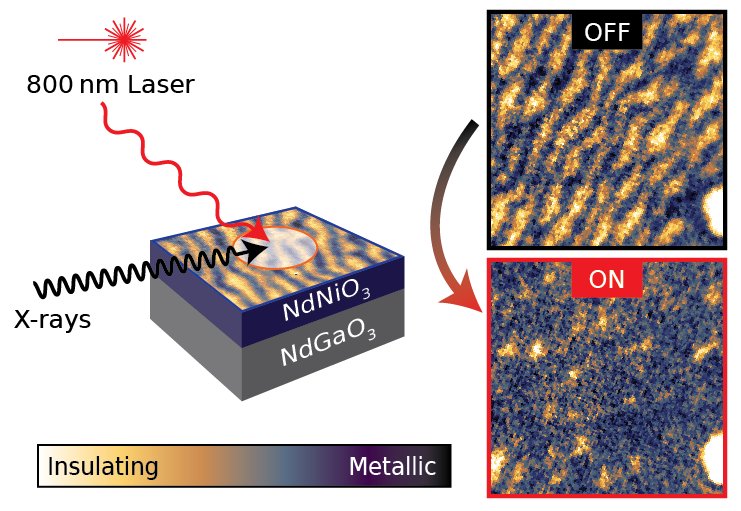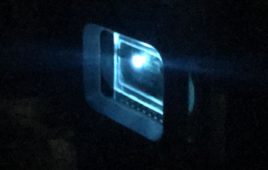Dr. Giordano Mattoni, quantum researcher at TU Delft, and his collaborators have shown that the nano-electronic phase transition in a class of materials known as nickelates can be controlled by laser light. Their findings, which were published in Physical Review Materials, are an important step in the field of new materials for electronics.
Nickelates are a class of solid-state materials with a set of unique properties, including that they can undergo a phase transition from conducting to insulating behaviour. In earlier research, Mattoni and colleagues showed how the metal-insulator transition (MIT) propagated throughout such nickelates. In recent experiments, they have proven that the MIT can be controlled with laser light.
“Materials with reprogrammable physical properties at the nanoscale are highly desired, but they are scarcely available so far,” says Mattoni.
During their experiments at an international research laboratory in the U.K., the scientists directed ultrafast laser pulses with duration of 100 femtoseconds at a sample of NdNiO3 (neodymium nickelate). “Sending a very fast, high-energy pulse of laser light raised the temperature of the sample from 150 to 152 Kelvin for a small instant of time. This small temperature increase was enough to change the property of the material from insulating to conducting. By increasing the power of the laser, we could control how insulating or metallic the material could be, and thus control its physical properties.”
That control is also made possible by another property of the material: hysteresis (from the Greek for “lagging behind”). “Heating up or cooling down, the material doesn’t follow the same pattern of transition. We can use that phenomenon to lock the material in a certain phase.” In everyday life, hysteresis is used to control thermostats in fridges or central heating systems, for example. Activation and deactivation is controlled by detecting temperature, so that systems do not continually turn themselves on and off.

Sending a very fast, high energy pulse of laser light raised the temperature of a sample of neodymium nickelate from 150 to 152 Kelvin for a small instant of time. This small temperature increase was enough to change the property of the material from insulating to conducting. Image: Giordano Mattoni/TU Delft
Although this study was fundamental, practical applications are on the horizon: materials in which conductivity can be switched on and off could be used for switches and circuits for novel electronic devices. “Such materials could be used for artificial neural networks,” Mattoni says. “So far, all developments in the field of artificial intelligence have been made in software. If you can run algorithms directly with some kind of hardware, you can truly create something akin to the brain.”
Despite its positive results, the experiment itself had not been planned as such. “We were actually working on a very difficult experiment that we had to abandon. However, that meant we had some time left at the synchrotron, and those few hours we used to full effect.” Proving that even in fundamental science, you have to make hay while the sun shines.
Source: Delft University of Technology


